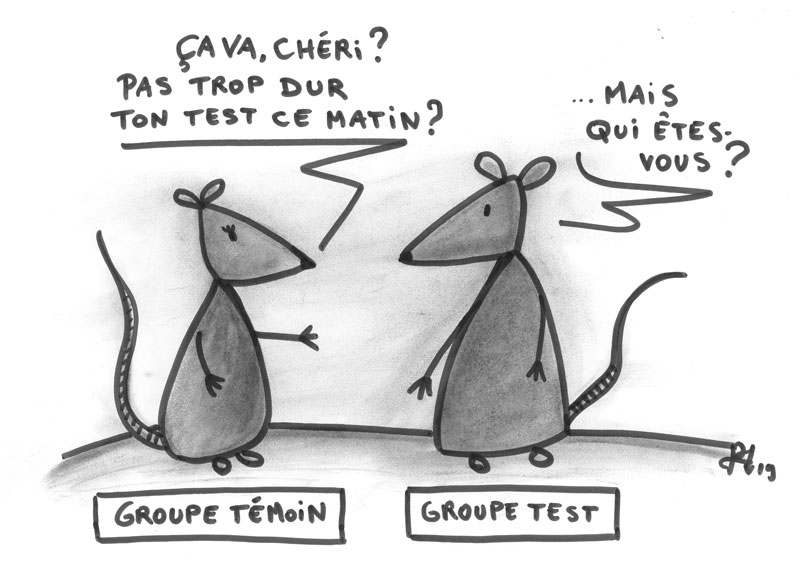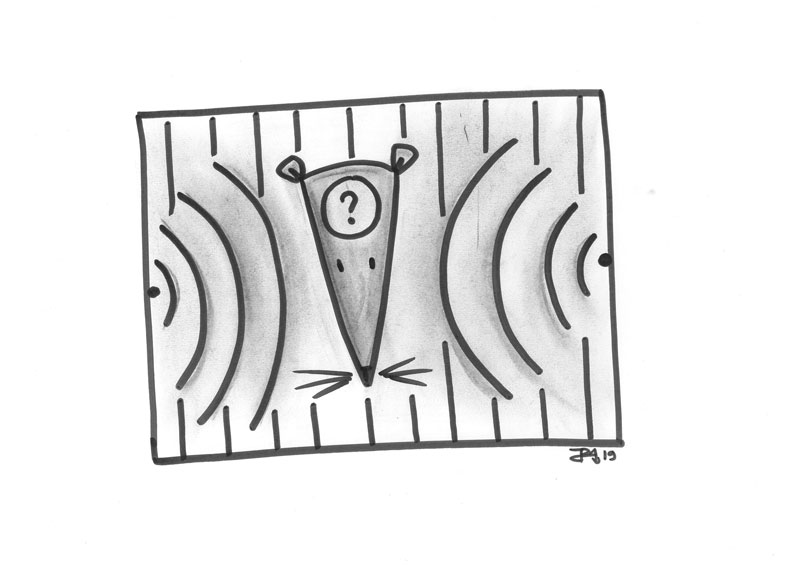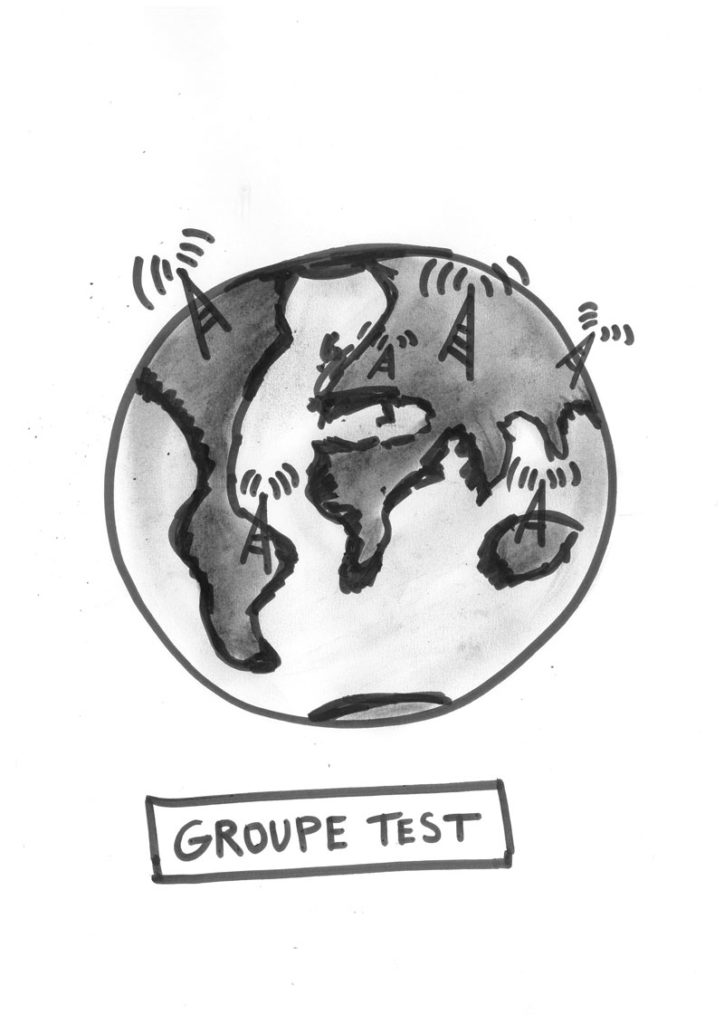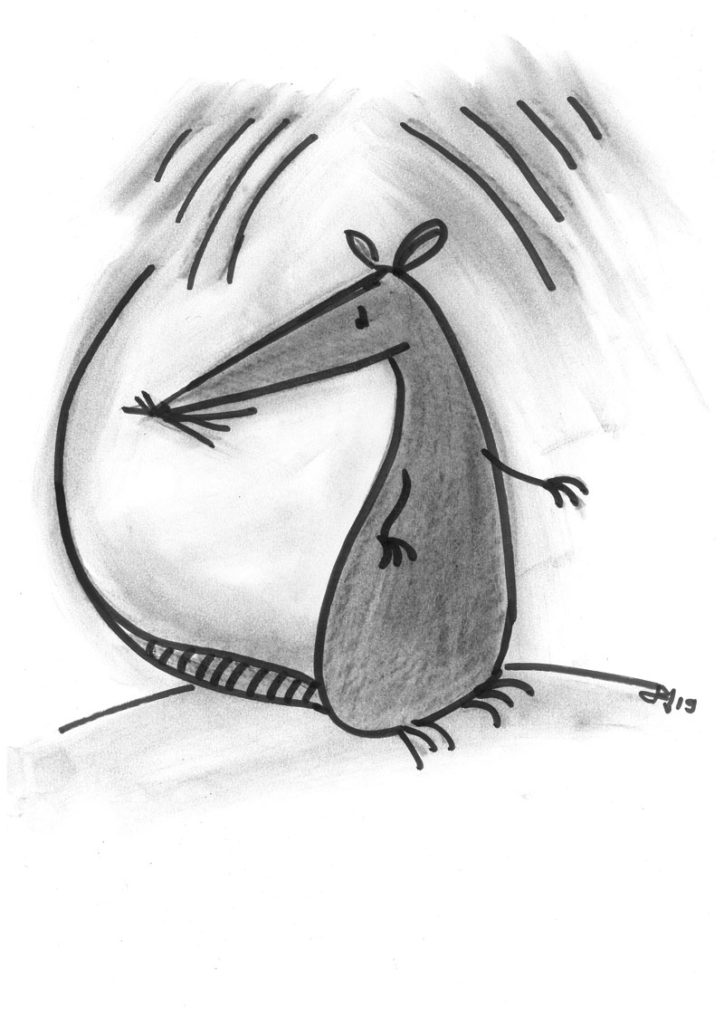
Julian Assange
636 weeks of deprivation of liberty for telling the truth
636 weeks of deprivation of liberty for telling the truth
André Vander Vorst, professor emeritus of the University of Leuven, has worked for more than 20 years on electromagnetic waves. Its results — increased mortality of exposed rats, changes in their blood composition, loss of memory — should at least have imposed a moratorium on the deployment of systems operating with such waves. Even if Belgium is not the worst performer in Europe, the ideology of a « connected world » has not been tainted, as Brussels aims to be one of the first 5G cities. However, according to the scientist, humans should never play the sorcerer’s apprentice in matters of waves.
An original feature of your work is that you made measurements on animals. How did you do it?
We worked on rats, peaceful animals that are well suited to the laboratory, some of which were exposed to microwave radiation(1), while the control group was not. This is not an absolute measure of what is happening to the exposed rats, but a comparison of what is happening to the exposed rat with what is happening to the unexposed rat. Rigorously, this type of experiment should be done on human beings, but there is no way to compose a control group: we can no longer find human beings who are not or have not been exposed. Microwave implantation has been so rapid and widespread that it is no longer possible to rigorously study its effects on human beings. This means that those who say to you today, » You know nothing is proven « , are either deceiving you (they are false), or are ignorant.
This could be a sub-answer to the question question: what have been the most amazing results of your career?
Indeed, we are in a situation where it is not possible to use the least questionable scientific method since we cannot find a control group.
Is everyone affected?
That’s right. Some people say: » But we can take a Lappish « . In this case, if you do it and publish it, the one who doesn’t want to consider your results will say » But finally, you take a group in Belgium and compare it to a group in Lapland… the sociological composition is so different that it doesn’t mean anything anymore « . And he is not wrong…
Mr. Vander Vorst, you are professor emeritus at the University of Leuven, you have worked all your career on microwaves and microwaves and have created a microwave laboratory. What did your job basically consist of?
Since the laboratory was created, we have studied in detail what happens on very high frequency transmission lines. That was in 1966. The first Sputnik was 1957, the first Telstar, 1962(2)… I then directed my research during years towards studies especially atmospheric or tropospheric, the lower atmosphere: to what extent the transmission evolves according to the atmospheric circumstances. Then I became interested in research on devices that translate microwaves into optics and vice versa, and I started to focus on biological aspects. At the end of the 1960s, a neurophysiologist friend of mine at the UCL — we were still in Leuven at that time — asked me if microwaves could possibly be used to treat goiters in Swiss cows, but also in humans. So I did some measurements in spite of common sense, it didn’t give any result, I didn’t know anything about it… Ten years later, my shop manager and I patented an air sterilization device to do field surgeries with a laminar flow that passed through a microwave cavity, a large cavity, in which, at regular intervals, the system imposed a power dissipation that killed the bacteria by cooking them. Around 1985, I started working with a young Chinese engineer and we did some studies on rabbits, including a microwave acupuncture method. We developed an experiment to test whether non-thermal effects could be measured by exposing the spinal cord of rabbits. Finally, a little before the year 2000, we started a serious investigation where we exposed rats. So I’ve never done biophysics full time, but it’s something that’s been going on with me since the late 1960s, and growing.
From the year 2000 onwards, you were particularly interested in the effects of microwaves on the body and health of rats?
We had already started to prepare this in the years 1998–99. The measures began in 2004, with years of preparation since it was to make measurements on rats for 2 hours a day during 21 months. It was long, requiring 6 hours of work per day. The doctoral student, a military man paid by the army, was assisted by two preparators during 21 months, the aim was to verify whether effects were perceived to be relatively long term.
What were the effects of the exposure to the waves on the rats?
We worked with groups of 31 exposed rats and a group of 31 unexposed rats. 3 groups of 31 rats were exposed to various frequencies and signal modes. For example, one sounded like a cell phone, while the other was a single wave. We found two main results after 21 months. The first is that the composition of the blood was statistically altered in rats that had been exposed compared to those that had not been exposed, particularly with regard to white blood cells. The other result was that the mortality rate of exposed rats was about twice as high after exposure as the mortality rate of unexposed rats. It should be noted that these rats live for about 30 months and were exposed for 21 months from the age of 4 months. 30 months for a rat is equivalent to 90 years for a human being. Exposing the rats for 21 months would be equivalent to exposing humans for 63 years. Here we are far from the account, because the mobiles were introduced in our countries only around 1994, we still have to wait 38 years… So one of our concerns in working in this way was to see whether or not we could find long-term effects in rats that would then give us some idea of what might happen in humans. I say « give ideas », because one can never too quickly transpose to a human population epidemiological results obtained on an animal population.

What other effects on rats have you seen? especially in terms of memory?
During the study, we also tested memory and verified a multitude of previously published studies on the subject. We did not do original work, but we got confirmation. Rats that were exposed for 15 months to a certain type of exposure and those that had been handled in exactly the same way, but without the exposure box switch being turned on, were taken. The unexposed rats were then put in a cage containing two identical objects. The rat runs around one, runs around the other, gets to know both objects, then goes to play. After that, they are removed and, about 15 minutes later, he is put back in the cage after replacing one object with another. At this point, the unexposed rat hardly goes to the first object, it knows it and goes to the second object and discovers it. The 31 unexposed rats showed the same behavior. Afterwards, we repeated the experiment with rats exposed to the waves and we obtained completely different results: the rat which was exposed in the cage in front of two identical objects, turns around one then turns around the other, it discovers them. When we remove it and 15 minutes later, having replaced one object with another, we put the rat back in the cage, it will take as much time to recognize the first object it already knew as the second one it did not know. In other words, he lost the memory of the first one. It is very impressive to see…
Did that surprise you?
Oh yes! Finally, it confirmed previous results that showed that exposure of this type can indeed alter memory, but it is quite surprising that this animal lost its memory. The 31 rats that had been exposed all showed the same behavior, and then we did the experiment 5 times with each of these rats, and it gave the same result. So it’s not even a statistical result anymore: after 15 months, some of them recognize the object they have already met while none of the others do. It is also impressive because rats are widely used as laboratory animals, due to the fact that 90–95% of their DNA is similar to ours. It is impressive to see an animal, which is not so small, having lost its memory. The waves are not seen or felt, but they had an effect on the memory of 31 rats exposed for 15 months.
Which scientific results surprised you the most, or well there were other results that you didn’t expect not?
It’s quite exciting when you discover something new or, on the contrary, to confirm and get confirmations from competent colleagues who have already tested the same thing. This is a scientific aspect, extremely pleasant. But I expected it because I have been involved in this field since about 1997. I also know that not everyone is happy about this. The big surprise of the political-political kind, then, let’s say, are those few people, sometimes under the cover of science, who criticize your work. You then discover that you can publish an article in a good quality journal, find yourself facing people who have never done this kind of work but who criticize you verbally, without even writing an article… Members of the Dutch Board of Health wrote a two-page study three years after Dirk Adang’s thesis was published, while our article was eleven pages long… It is their right to do so, the process is correct. What I don’t pay any attention to anymore is having someone, doctor or otherwise, sitting around a table, without ever having done this, criticizing that statistically it’s not serious. It doesn’t make sense. These people are known to systematically downplay measured effects and try to devalue any study that produces positive results. We must beware of them like the plague, because they deceive the public.
Are their reasons scientific when they question the results of your studies? And are their motives?
They say so, but in my opinion it is not true at all. They are not generally not competent on this point; they should be asked how many articles they have already published on the subject. I know one which is very critical. To my knowledge, he has published an article on effects of microwaves, which I co-authored, so it doesn’t matter does not really allow him to play the expert capable of criticizing. This is part of history and others, like Mrs. Cammaerts, can say the same thing.
We also touch big economic interests…
There is still a lot of money behind it… I have nothing against money, but it has taken a considerable place. When I started my career at the University of Leuven, if you had a good idea, even once a year, that was fine. There was no pressure on you or the government to be directly useful to society, to participate in large research groups, to try to raise as much money as possible for equipment. I have experienced this, but not from the institution. Today, it has become difficult. In this kind of study, it is necessary to realize that the doctoral student, initially a soldier, became a doctor; his career was committed, he was not in the situation of a young researcher at the University trying to get a more or less definitive place. We started working on this in 1998–1999, the exhibition was completed in March 2005, the thesis was presented in 2008 and the article published in 2009. Ten years is still a luxury for a young researcher, which the University cannot afford. It is a difficult and slow field, exciting, but not very « profitable » from a scientific career point of view.
Can the experiments you did on rats be reproduced on human beings?
Here we come across a difficulty that needs to be discussed… We caught rats, one group was exposed and another equally similar control group as possible to the exposed group. In fact, we don’t do the measurements of a microwave exposure in this case, the measurement of this that we observe differently in an exposed group compared to an exposed group unexposed group. That’s the difference, not the absolute value.
As I said, we have to realize, when we talk about human beings, that we went so fast to introduce the cell phone — at the beginning of 1994, then the craze from 1997–98 — that we are unable to constitute a control group among human beings, because everybody is now exposed to micro-waves. There are no more unexposed groups! However, the least questionable scientific study is the one which consists in comparing an exposed group to an unexposed group, but there is no way to do that anymore… There is no longer any way to practice the least questionable type of scientific experimentation, which is why we work on rats in particular…

It is quite rare, in the scientific field, that there is no longer any control group, right?
The waves are almost impossible to avoid, because they are electromagnetic waves, and at these frequencies, they spread everywhere…
According to the scientific results you have had, what policy measures should be taken, taking into account the precautionary principle?
You ask a difficult question… I have already been talking about this with politicians over the years, but not anymore, because I am tired… I’m talking about long-term effects, because fortunately, it seems that no serious short-term epidemics have been observed with this type of exposure… So the question is: are there any long-term effects? As I was saying, we exposed our rats for 21 months, that corresponds to 63 years for a human being, it is still a lot of time… So, talking to a politician about this, I’ve done it from time to time, but I didn’t push it because, you know, when there’s an election in two months or two years, it’s a little hard to talk about 60 years of exposure.… Today we are caught in a more restrictive spiral than in the past because the short term makes the concern for the long term unthinkable. I find that studies of the type we have done need to be funded to get more important results, as well as publicizing the results. I’m not talking about making sweeping statements based on one attitude or another, but at least let’s get the facts straight and inform the public properly. Policies should also only take as experts people who are known to have published in the field, there should be transparency. In total, I believe that there is only one actor who is capable of influencing things in a significant way: the population. I think that thanks to the Belgian population, we have adopted standards here that are more binding in Belgium than in France, Germany, the Netherlands and Great Britain. In Brussels we were at 3 volts/meter, now we are at 6; in Wallonia and Flanders we are at something like 7 volts, 7.5 volts/meter maximum, while in the surrounding countries the limit is that of the World Health Organization which is 41.2 volts/meter, that is still a lot. In Belgium, we are more cautious, especially because it was possible to make recommendations to the Health Council that were in my opinion reasonable. I am talking specifically about caution, not the precautionary principle. The precautionary principle is a concept defined by European Union recommendations, which are sometimes difficult to interpret. I say be careful.
You say that we have to wait for a change or an awareness of the population, but when we met with you in 2013(3), you said that the calculation, in your opinion, was to let things go long enough that a reversal was impossible. Young people are so addicted that even if later on a principle of caution is imposed on them, no one will take it into account…
Can I pick up on two points? The first one is that, for me It seems that in Belgium, the population is aware. In addition, can be because the country is smaller, it has had an obvious effect on
policies to make different normative decisions. The other is that, if I think it’s only the public that can do it, it’s because there’s a lot of money behind it the operators, the shareholders, we must not forget. And the politicians must decide… I think that we made the calculation to go fast so that it would not be possible to go back, which has nevertheless failed since, in particular in Brussels, we went to 6 volts/meter, recommendation of the Health Council of 2000, confirmed in 2005.

As an individual who is aware of the effects of electromagnetic waves on rats, which can be extrapolated to humans, what have you changed in your life with respect to the risk of exposure?
This was played out on two very different levels. One is the scientific aspect, as I was saying earlier, which brings the satisfaction of seeing that we obtain interesting results… If a researcher doesn’t find anything, which may be the case, it’s less fun. The other is my personal opinion, which I have as much as anyone else. When we express ourselves in science, it is on a rigorous basis. My personal opinion is that man is likely to modify the environment in an extremely significant way, he is likely to damage our planet, and if there are no reflexes that remind us of common sense, this is likely to happen… On a personal basis, for example with regard to the waves, I think that the effect of man in the environment should be zero… We need to find other ways. I don’t have wifi at home, I have a landline phone, it works really well, it’s very comfortable to sit in a chair, to hear and speak well. Let’s add that we have to be very careful also with the quality of water, air, environment, including the waves in question…
So you manage to put a barrier between what you do scientifically and, say, what happens in your life or in the lives of others. But then what is the relationship between a certain form of truth that you are trying to bring to light and the effects in reality. How do you feel about the fact that the experiments you conduct and the results you have may not be reflected in the real world?
This is a difficult question because it can be asked about thirty-six things, obviously, not only for the airwaves. In In fact, I also feel like I am spreading the word in my family, at my friends’ house. People who criticize you sometimes do not read literature, and they say so. They know that long after, it something remains. That being said, I’m still quite convinced of the freedom of the human being, and therefore if someone from my family or a friend does things differently, I don’t have much of concern in this regard. It’s not really my problem, it’s his own. I think that the most urgent thing to do is perhaps at the level of the freedom of the individual which must be able to be exercised, but it must be properly documented, and then people like me or like politicians have an influential role to play. One of my surprises was to see how many of those who are hostile to talking about risks, are in fact practicing lying by omission with joy. You are told something that is accurate, but you are not told which is just as accurate, but which modifies everything the type of appreciation that one can have with regard to what we talk. Lying by omission is very common… I have some masses at disposal.
Interview by Alexandre Penasse.

Thanks to Sébastien Gillard for the transcription, to Bernard Legros for proofreading.